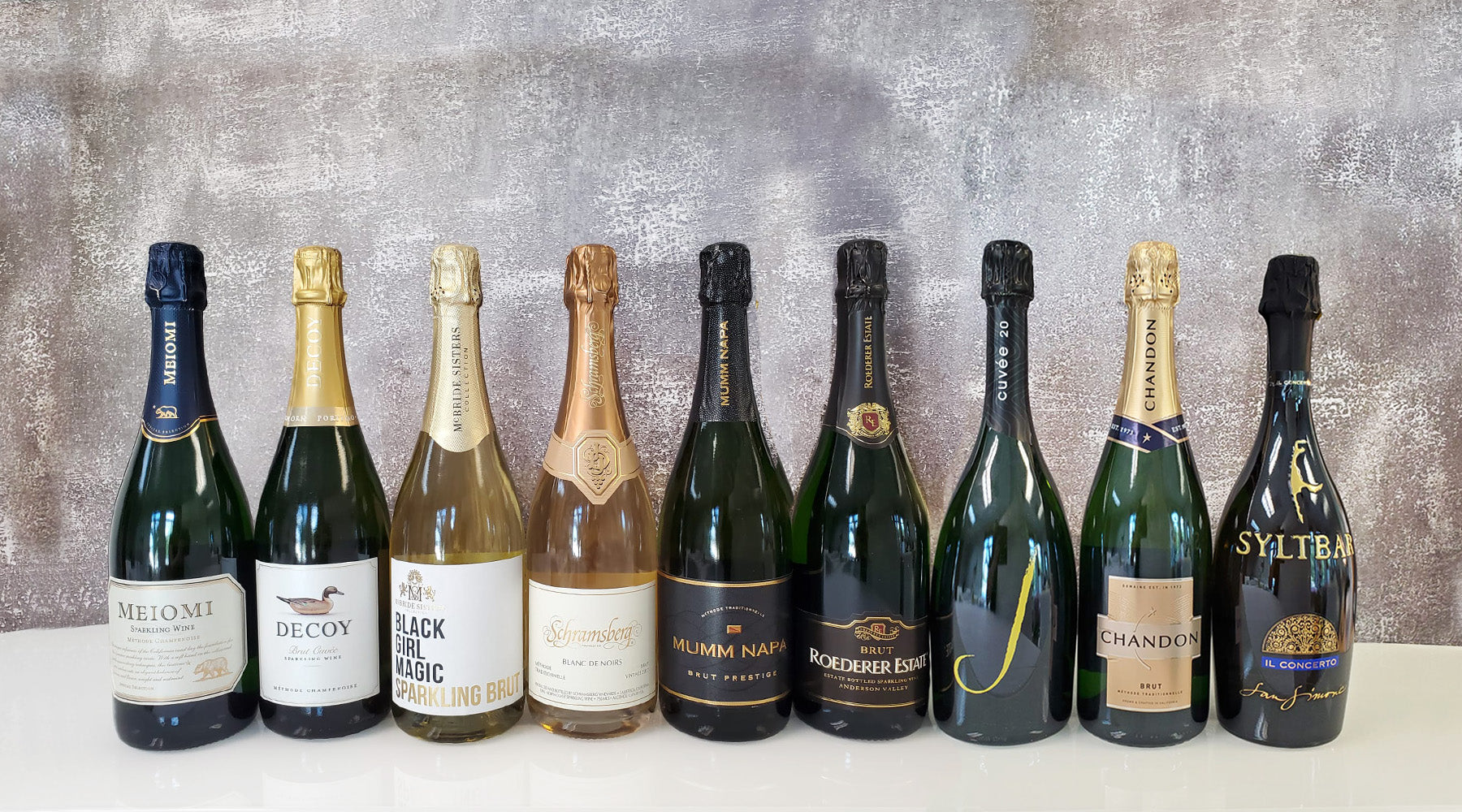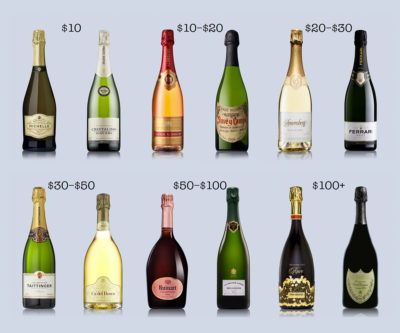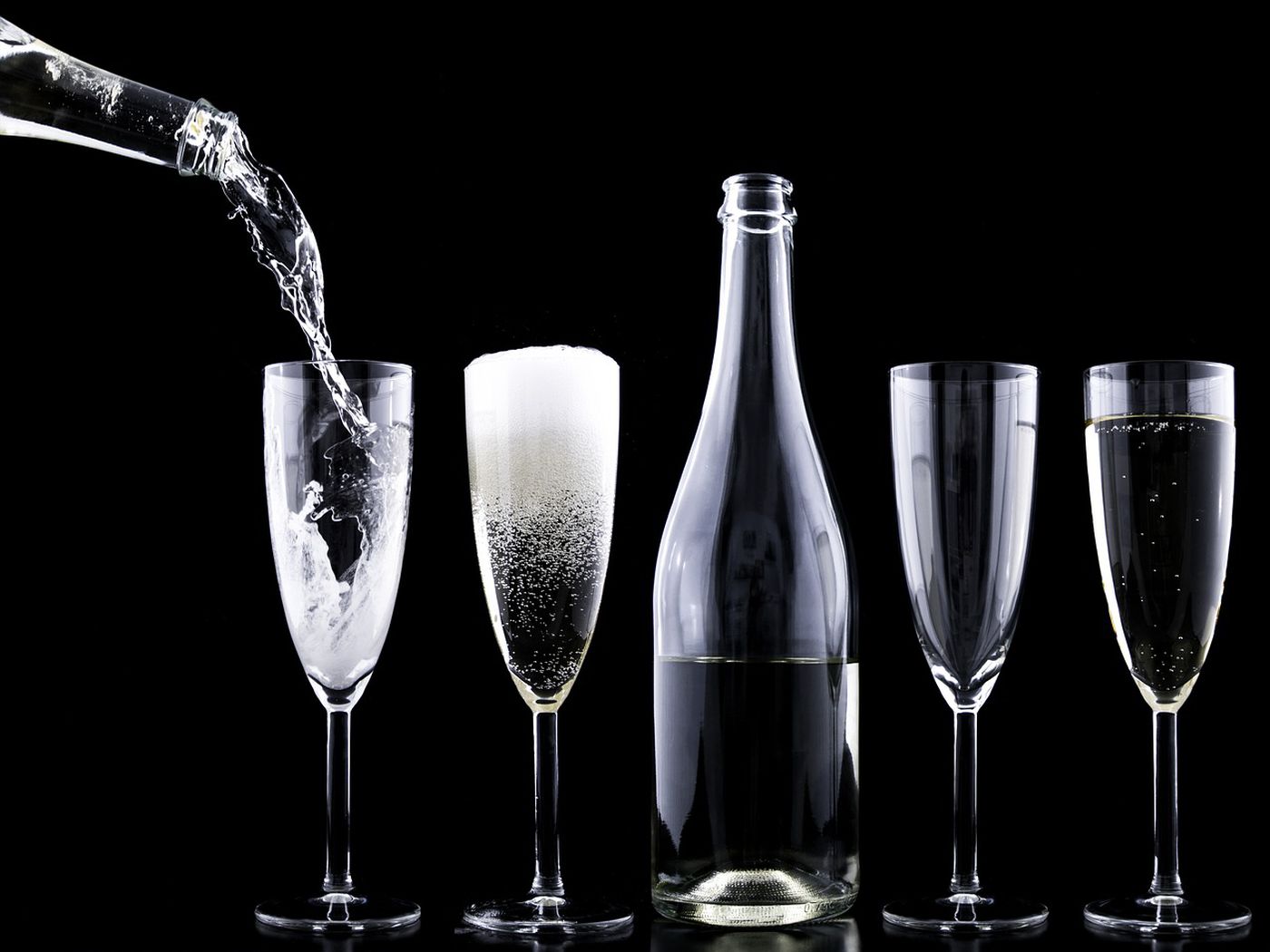Champagne, the celebratory drink known for its festive bubbles, can also pack a punch. But just how much alcohol lurks beneath the festive fizz?
This article explores the Alcohol Content of Champagne, exploring the average ABV (alcohol by volume) and how it can vary depending on the specific type of bubbly you choose. We’ll also compare Champagne’s alcohol content to that of other beverages and offer tips for enjoying this delightful drink responsibly. So, before you raise a toast, let’s get informed about the alcohol content in your favorite Champagne!
Understanding Alcohol Content In Champagne

For anyone who enjoys the celebratory pop of a cork and the bubbly delight of champagne, understanding alcohol content (ABV) is key. Champagne typically ranges from 11.5% to 12.5% ABV. Knowing the specific ABV of the bottle you’re enjoying allows for responsible consumption.
Several factors influence a bottle’s ABV. The grape varieties used (Pinot Noir, Pinot Meunier, etc.) have varying sugar levels, which ultimately affect alcohol content. Ripeness also plays a role – riper grapes lead to higher alcohol content champagnes. Yeast selection and fermentation techniques further contribute to the unique ABV of each bottle.
Understanding these factors allows you to make informed choices. Knowing the ABV allows you to pace yourself and enjoy champagne responsibly. After all, responsible consumption is the key to a truly delightful champagne experience.
Light and Refreshing: Exploring Low-Alcohol Champagnes

Do you crave the bubbly joy of champagne but prefer a lighter touch? Look no further than low-alcohol champagnes! Perfect for casual gatherings or daytime celebrations, these options offer a delightful drinking experience with a lower alcohol content.
What is Low-Alcohol Champagne?
Low-alcohol champagnes, also known as sparkling wines, boast an ABV (alcohol by volume) ranging from 9% to 11.5%. This translates to a lighter and more refreshing experience on the palate. These sparkling gems often showcase delicate flavors and crisp acidity, making them ideal for those seeking a subtler approach to bubbly enjoyment.
Whether you’re enjoying a relaxing afternoon or a casual brunch, low-alcohol champagnes are your perfect companions. They allow you to savor the festive effervescence and elegance of champagne without feeling overwhelmed by a higher alcohol content.
Popular Picks for Your Next Celebration:
When venturing into the world of low-alcohol champagnes, several distinguished brands stand out. Laurent-Perrier Ultra Brut is renowned for its exceptional quality and delicate flavors. Moët & Chandon Impérial offers a light and crisp taste with a lower alcoholic content. For a touch of sweetness, explore Veuve Clicquot Rich, a refreshing champagne with a slightly lower ABV. These brands, along with others, provide the perfect balance between flavor and alcohol content, ensuring a light and enjoyable drinking experience.
So next time you desire a bubbly celebration without the heavier alcohol content, raise a glass to the delightful world of low-alcohol champagnes!
Full-bodied And Strong: High Alcohol Champagne Varieties

High-alcohol Champagnes tantalize the palate with their robust and full-bodied characteristics. These Champagnes boast an alcohol content ranging from 12.5% to 14% ABV, significantly higher than their lower-alcohol counterparts. This elevated alcohol level contributes to a richer and more intense taste experience, adding depth and power to the flavor profile.
Masters of Complexity: Renowned Champagne Houses
Champagne houses like Bollinger, Krug, and Dom Pérignon are celebrated for crafting exceptional high-alcohol Champagnes. These prestigious producers use their expertise to unlock the full potential of the Champagne region, resulting in wines that showcase remarkable complexity and depth. Their high-alcohol Champagnes are ideal for those seeking a bolder and more powerful expression of Champagne.
Savoring the Experience: Pairing and Enjoyment
High-alcohol Champagnes are best enjoyed on their own, allowing the full spectrum of flavors to shine. However, they can also be paired with robust and savory dishes that can stand up to their intensity. Think rich cheeses, flavorful charcuterie, or even certain seafood dishes.
Notable Producers: A Legacy of Excellence
Bollinger, Krug, and Dom Pérignon represent the pinnacle of high-alcohol Champagne production. Each house brings its unique touch:
- Bollinger’s “Special Cuvée” offers a rich and intense experience with an alcohol content of around 12.5% ABV.
- Krug’s prestige cuvées showcase the depth and complexity achievable in high-alcohol Champagnes, with some varieties reaching 12.5% to 14% ABV.
- Dom Pérignon, a symbol of luxury, creates high-alcohol Champagnes with exceptional aging potential and captivating flavors.
These renowned producers continue to push the boundaries of quality, delivering extraordinary wines that pay homage to the Champagne region’s rich heritage and expertise.
The Health Effects of Alcohol in Champagne
Champagne, like any alcoholic beverage, comes with health considerations due to its alcohol content. Overindulging can lead to a range of issues, including:
- Liver Damage: Excessive alcohol consumption can harm the liver, the organ responsible for processing alcohol.
- Cardiovascular Issues: High alcohol intake can increase the risk of heart disease, stroke, and high blood pressure.
- Cancer Risk: Studies suggest a link between heavy alcohol consumption and certain cancers.
- Alcohol Dependence: Regular excessive drinking can lead to dependence on alcohol.
Drinking Responsibly: Key to Enjoying Champagne
Moderation is key to enjoying champagne safely. The recommended daily limits are:
- Women: Up to one glass
- Men: Up to two glasses
Remember, these are just guidelines. It’s always best to prioritize your health and listen to your body.
Champagne Cocktails: A World of Bubbly Possibilities

Champagne cocktails are a fantastic way to enjoy the festive fizz while adding a personalized touch with different strengths. Whether you prefer a light and refreshing drink or something a bit more potent, there’s a champagne cocktail out there for you.
Exploring Flavors and Strengths:
The magic of champagne cocktails lies in their versatility. By mixing champagne with various spirits like vodka, gin, or liqueurs, you can create a delightful symphony of flavors. Want something light? Opt for a Champagne Spritzer with soda water and a hint of fruit liqueur. Craving a stronger drink? Try a classic Champagne Cocktail with brandy and a touch of bitters. The key is to experiment with proportions to find the perfect balance and maintain the delightful effervescence of the champagne.
Crafting the Perfect Fizz:
To achieve the best champagne cocktail experience, there are a few handy tips:
- Chill it Out: Always start with chilled champagne. This keeps the drink refreshing and preserves those magical bubbles.
- Champagne Last: When adding ingredients, save the champagne for last. This minimizes the loss of those delightful bubbles.
- Stir Gently: Avoid vigorous shaking or stirring, as this can turn your bubbly beverage flat. A gentle stir is all you need.
- Elegant Touches: Garnish your creation with fresh fruits or herbs. This enhances the flavors and adds a touch of sophistication.
So, raise a glass and explore the exciting world of champagne cocktails! With a little creativity and these helpful tips, you can create refreshing and delightful cocktails that are perfect for any occasion.
Conclusions And Recommendations
Understanding the alcohol content of champagne is key to getting the most out of this celebratory beverage. Whether you prefer a light and refreshing experience or a more robust flavor profile, there’s a perfect champagne for your taste.
Low vs. High Alcohol Content: Tailoring Your Choice
When selecting champagne, consider the alcohol by volume (ABV). For a lighter experience, opt for low-alcohol varieties, typically around 11.5% ABV or lower. These champagnes offer a refreshing quality.
If you enjoy full-bodied flavors, choose high-alcohol champagnes, ranging from 12.5% ABV and above. These will deliver a richer and more intense taste profile.
By understanding how alcohol content affects flavor, you can select a champagne that aligns perfectly with your desired drinking experience.
Pairing Champagne for a Perfect Occasion
Champagne’s effervescence and acidity make it incredibly versatile when it comes to food pairings. Here are some classic combinations:
- Seafood: Oysters, caviar, and sushi are all excellent partners for champagne.
- Light Appetizers: Cheese and charcuterie platters are delightful complements to champagne’s crispness.
Beyond food, champagne reigns supreme for celebratory occasions. Its elegant bubbles and luxurious taste elevate weddings, anniversaries, and New Year’s Eve, adding a touch of glamour and joy to any special moment.
Remember: Responsible enjoyment is key. Always consume champagne in moderation, especially when mixing drinks with varying alcohol content.
References:
- https://medium.com/@paddmabusiness/alcohol-content-in-champagne-sparkling-wine-d42c8c26b655
- https://www.drinksurely.com/a/blog/champagne-alcohol-content
FAQ About Alcohol Content In Champagne: Bubbly Strengths
Q: What is the typical alcohol content in Champagne?
A: The typical alcohol content in Champagne ranges from 11.5% to 12.5%.
Q: Can Champagne have a higher alcohol content than 12.5%?
A: Yes, some Champagnes, especially those labeled as “Extra Brut” or “Brut Nature,” can have alcohol content exceeding 12.5%.
Q: How does the alcohol content in Champagne affect its taste and bubbles?
A: The alcohol content can impact the body and perceived sweetness of the Champagne. Higher alcohol content may contribute to a richer mouthfeel and a more significant warming sensation.
Q: Is there a correlation between alcohol content and Champagne’s aging potential?
A: Generally, higher alcohol content can contribute to a Champagne’s aging potential as it provides more structure and stability to the wine.
Q: Are there Champagne varieties with lower alcohol content available?
A: Yes, there are Champagnes labeled as “Demi-Sec” or “Sec” that have lower alcohol content, usually around 11%, to balance the sweetness in the wine.
Q: How can consumers determine the alcohol content of a specific Champagne bottle?
A: Consumers can usually find the alcohol content specified on the label of the Champagne bottle, expressed as a percentage by volume.
Q: Does higher alcohol content necessarily mean better quality in Champagne?
A: Not necessarily. The quality of Champagne is determined by various factors, including grape quality, winemaking techniques, and aging processes, rather than just the alcohol content.

Looking for a bar to make your new local hangout? Look no further than Smokin’ Cues, a hidden gem located in the heart of Stockbridge, GA. At our bar & restaurant, we’ve got you covered when it comes to a great time!
Come hear some great live music, catch some sports, have a few drinks, or just sit back and relax! At our pool hall, there’s always something to do.